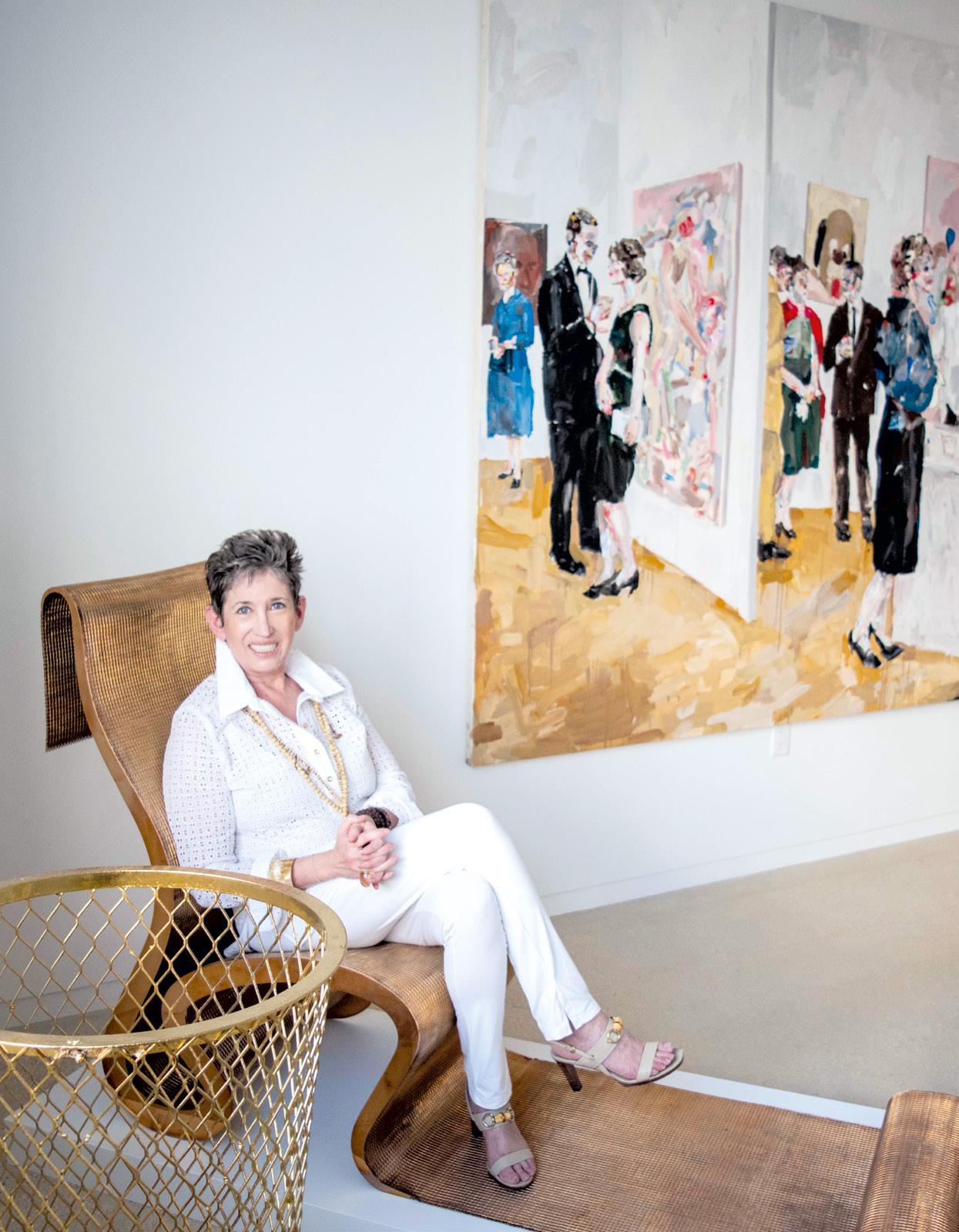
3 minute read
By Design - BETH RUDIN DEWOODY
The collector and curator on creating an artwork from her collection of pots, and how Barbra Streisand was part of her design awakening
Do you remember your first-ever design purchase?
I don’t, but I was always aware of design. I used to collect Beatles memorabilia and baseball cards and magazines when I was young. Aged about 15, I went to see Funny Girl with Barbra Streisand and got to go backstage. Her dressing room was in an orange and paisley design and I thought it was so cool. A few years later, my mother was redoing a bedroom in our apartment and asked me what I wanted and I said, “Paisley, like Barbra Streisand.”
Is there an object that you are particularly proud of?
That’s a really hard question. I guess I’m proud of this little bamboo recorder that I made at [Rudolph] Steiner school. I don’t remember the age I was when I made it, but probably 58 years ago. I just keep certain things – I love all that.
You opened a private art space, the Bunker, in 2017. How much of a role does design play in what you show there?
A little bit. Of course it’s changed now, but we had a great Ron Arad chair when you entered, and a Fornasetti piece, and a great chandelier there. It depends who’s curating, but we’ve always loved to combine art and design. I like to create it as I do in my home.
Do you think there’s an increase of interest in the blurring of the lines between design, functionality, and fine art?
I’ve always felt that there was a connection there. Right now, I think I own around 10% of the pieces that are in the Whitney’s craft show [Making Knowing: Craft in Art, 1950–2019], which shows this blurring of the lines. Liza Lou and Jeffrey Gibson are people who use objects that could be considered craft, but in an artistic way. I think the Whitney borrowed so much because over the years it never collected that kind of work as it was “too crafty”. Now, all of a sudden, there’s an interest in it.
What would you say to a design collector starting out today?
To give you an example of reusing design to create art in my own collecting, when I had a house in Southampton, New York, I had a big collection of white, kitschy 1930s, 40s, and 50s pottery. When I sold the house I thought, “What am I going to do with this?” Joel Otterson, an LA-based artist, showed me a piece of his called The Wall of China, which was a big installation of lots of green pottery. He ended up making a wall in three parts for me, using all my pottery and making things for the pottery to fit into. And it looks amazing; it’s kind of a divider in my apartment.
My advice is to look, look, look, and not be intimidated. There are a lot of people who think everything is a million dollars because they see the headlines. But there is a lot of great art for very little money. When you go into a gallery, ask questions, tell the people that you’re really interested to learn more, or ask what they have in their back room. Go to fairs and look at what people are designing, and plunge in and see what you can afford. And start building a collection. Be creative – go to flea markets and you might find great design objects there, great little vases or pottery. Start developing your eye.
Top Image: Beth Rubin DeWoody sitting in Ron Arad’s London Pappardelle chair, 1992, with Sylvie Fleury’s wastebasket sculpture Yes to All, 2004, and John Copeland's painting I Only Have Eyes For You, 2008. Courtesy: Beth Rudin Dewoody










